Late Cretaceous
Mongolia Nemegt Formation
The Campanian thru Masstrictian.
Updated 112014
It is among the youngest Late Cretaceous sediments of the Gobi Basin and was first discovered in 1948. It has not been dated absolutely, and even its relative date is not certain. However, it is somewhere in the late Campanian - early or mid Maastrichtian time range. It is up to 400 m (1300 ft) thick and overlies the Barun Goyot Formation. It was deposited at a time of warm, sub-humid climate with seasonal rains, and has yielded an enormous range and diversity of fossil remains, including fossilized wood, gastropods, pelecypods, amphibians, fish, turtles, rarely crocodiles, dinosaur eggs and a rich assortment of dinosaurs, particularly of the large variety. Tarbosaurus, Gallimimus and Saurolophus are all represented by more than 10 specimens. Strangely missing are lizards and mammals. It is noted for its high diversity of theropods. Herbivorous dinosaurs are relatively rare, and ceratopsians are absent.
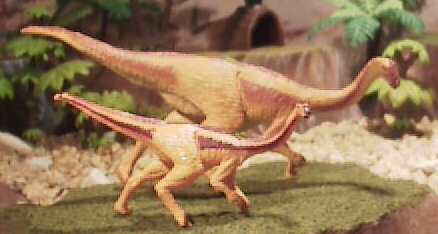 |
The earliest Ornithimimids are known from China. They are well known from North America. Gallimimus (Chicken Mimic) may have been the largest of the ostrich dinosaurs (with the exception ofDeinocheirus), with a long, flat, broad-ended snout. Its hands seem poorly made for grasping, and it may have scraped at soil and fed on eggs. Sanchusaurus may turn out to be a species of Gallimimus.
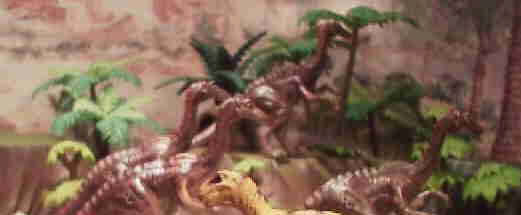
Gallimimus had a long snout with a flat tipped beak and spade like hands. The hands appear to lack the flexibility for grasping.

Shantungosaurus (Shandong Lizard), at 45 feet or more, reached the size of a sauropod. This largest of the flat headed hardrosaurs resembled Edmontosaurus, from North America.
Tarbosaurus may just be a slender variant of the North American Tyrannosaurus while Saurolophus has been on both continents. Conventionally this is seen to show that the close relationship of the fauna was a result of migrations from Asia to North America in the Late Cretaceous.
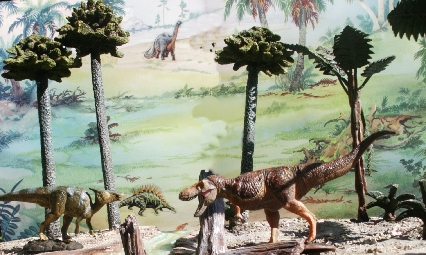 |
 |
The Tarbosaurus and Saurolophus are another cosmopolitan pair from the Asian Cretaceous. Both have close ties to North American fossils.
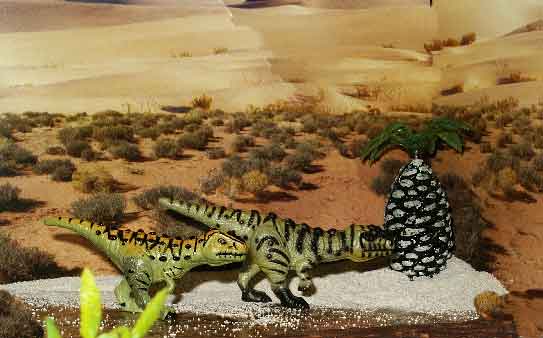
Alioramus is a rare tyrannosaurid known from limited material. Could be young Tarbosaurus. It characterized by the row of five bony crests along the top of its snout, and also has more teeth than any other tyrannosaurid. Size is difficult to estimate without a confirmed adult fossil.
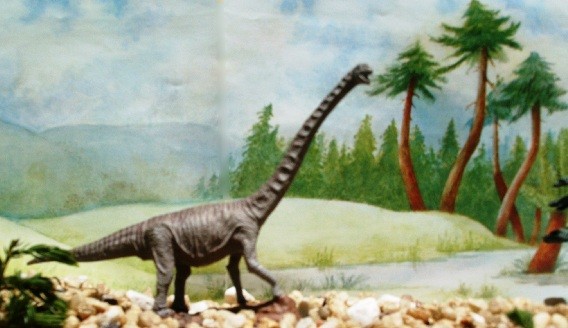
Opisthocoelicaudia is a sauropod from the Late Cretaceous Asia. It may be the same as Nemegtosaurus, another sauropod found in the same area and time. As no skull has been identified we may have another Brontosaurus where the lack of a skull gives us an invalid name . Asian sauropods don't seem to make the trip to North America.
Deinocheirus first known only from arm bones - each slim arm with 3 huge claws. Generally regarded
as a primitive ornithimimosaur, it lacks many of the derived characters. New fossils show it was a giant beaked omnivore with a large back bones for a fin that supported a stomach muscles used to process the plants it ate.
